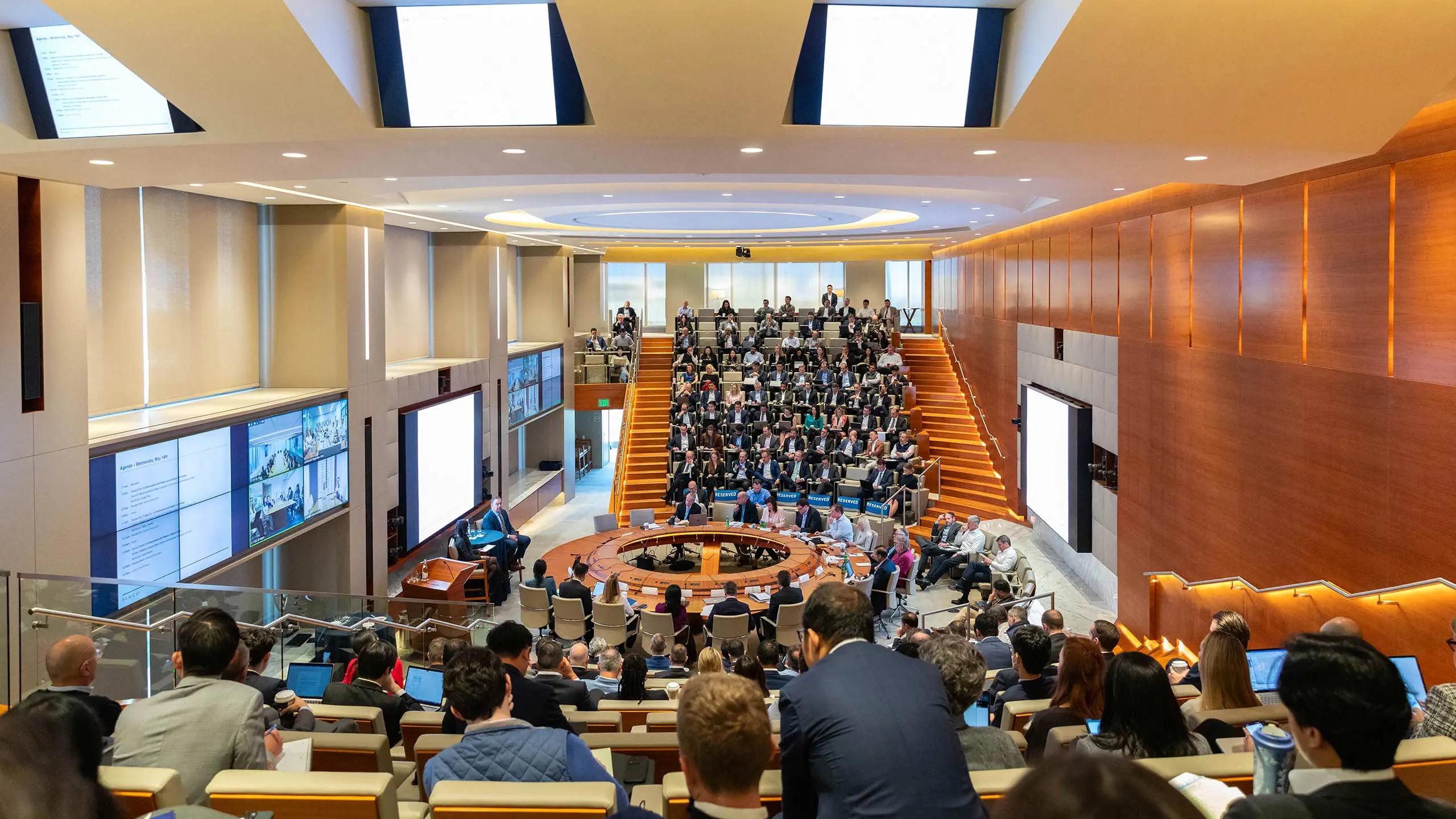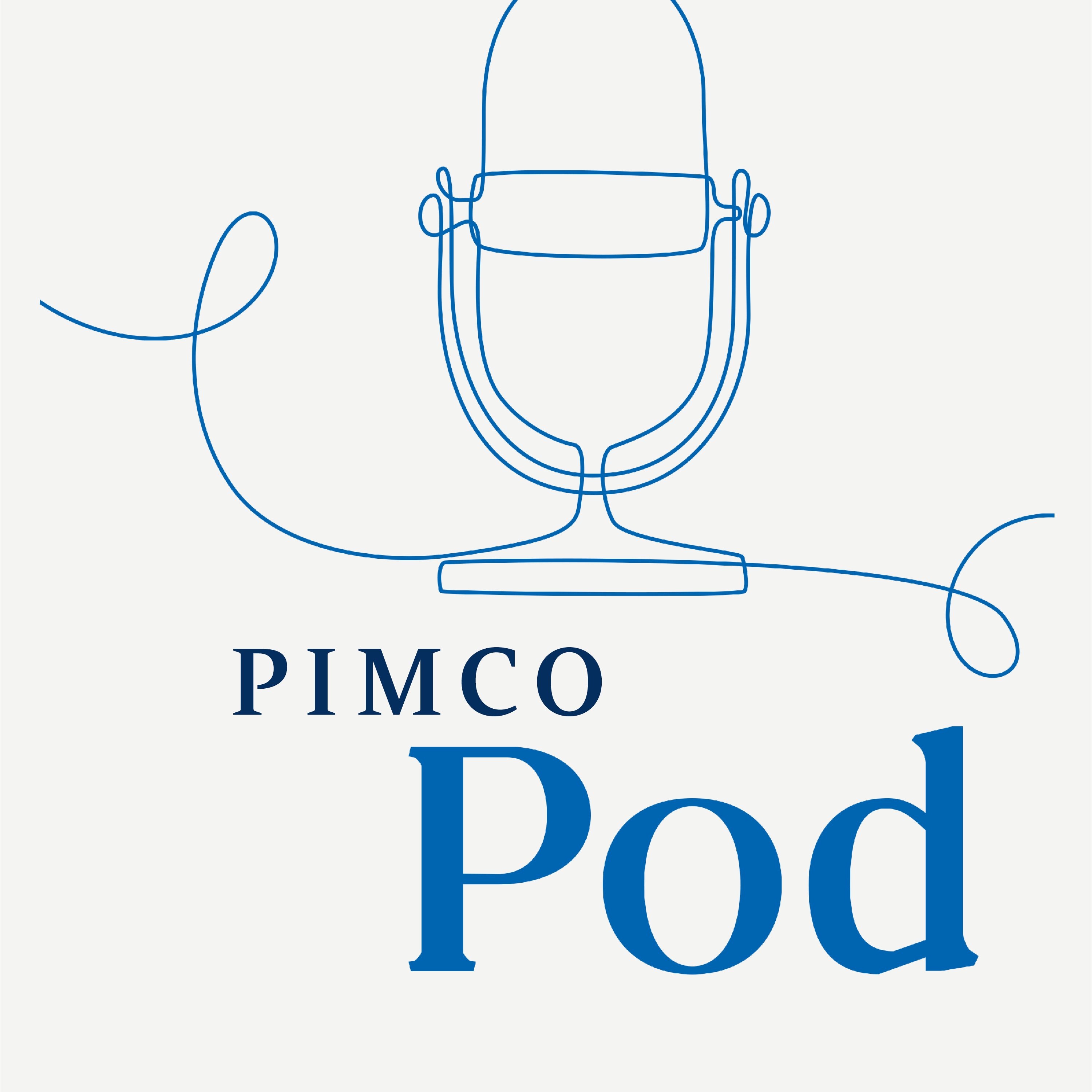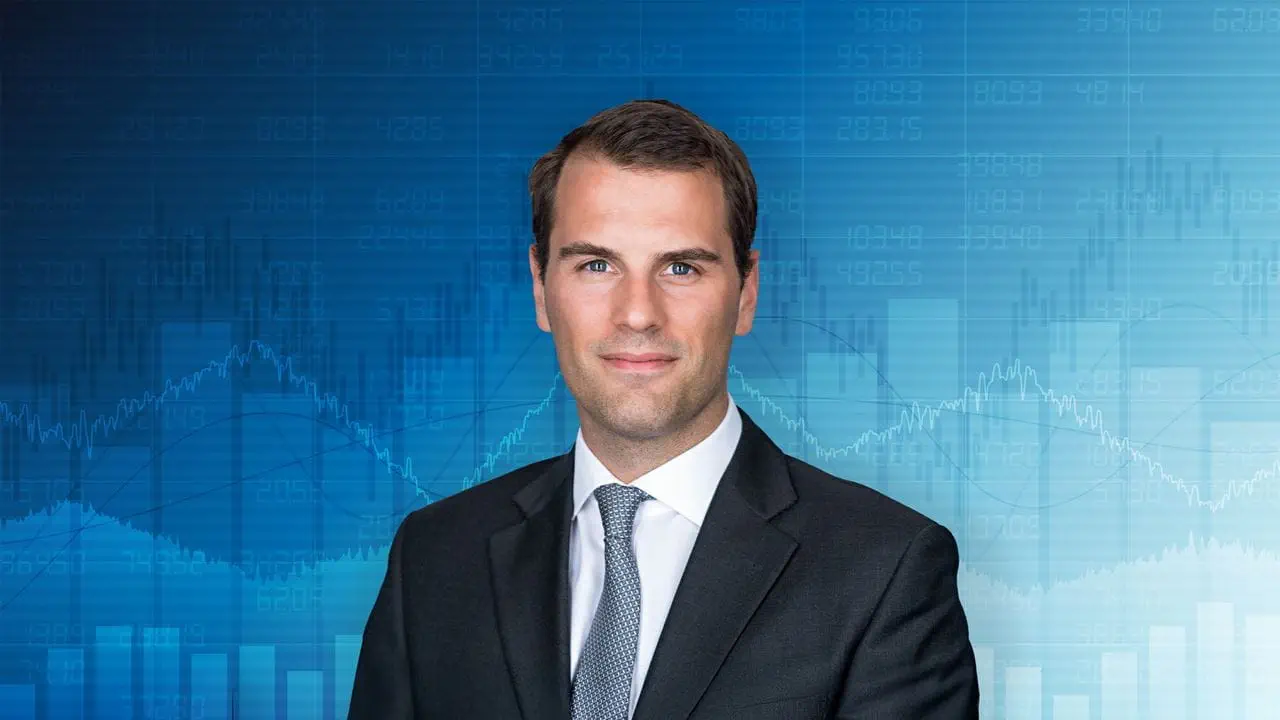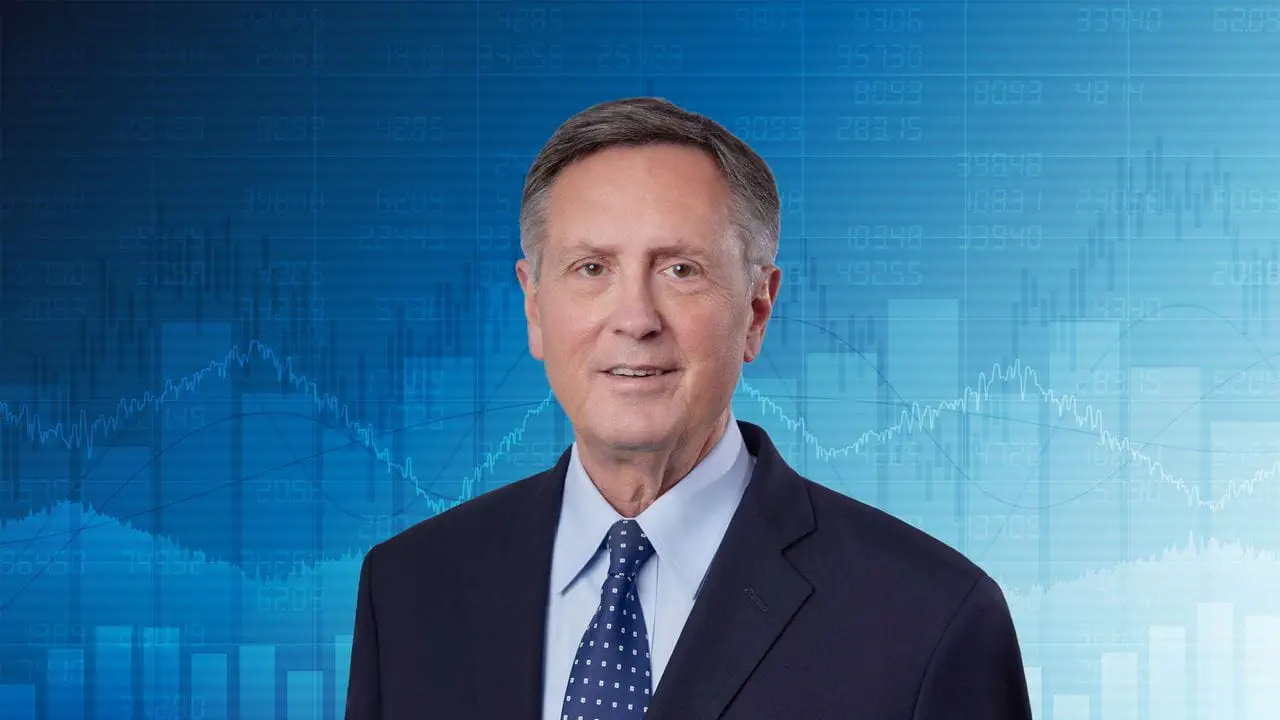


Secular theme: The fragmentation era
In our 2024 Secular Outlook, “Yield Advantage,” we argued that central banks had largely tamed inflation and would soon start cutting interest rates. We said risks were shifting from growth and inflation to elevated risk asset valuations. We warned that the U.S. debt was on an unsustainable path. We highlighted that the post-pandemic inflation shock and rate-hiking cycle had produced a generational reset higher in bond yields – from the historical lows of the 2010s to levels that supported a strong multiyear outlook for global fixed income.
At the risk of understatement, a lot has happened in the ensuing 12 months:
- Trump 2.0: An unprecedented agenda to redirect U.S. fiscal, regulatory, immigration, national security, and trade policies.
- DM central banks began easing cycles, but themes of a global soft landing, U.S. exceptionalism, and disinflation are faltering in the face of a burgeoning trade war.
- Elections triggered an unforeseen fiscal and defense policy U-turn in Germany.
In short, the traditional world order – in which economics shaped politics – has been turned on its head. Politics is now driving economics, especially in the U.S. and increasingly in how other countries respond.
The fragmentation of trade and security alliances will likely become an independent driver of winners and losers, business cycles, and market volatility. Moreover, industries favored by national policies are now in play based on changing administrations and regional priorities – evident in the U.S. pivot toward legacy fossil fuels and autos and Europe’s renewed focus on defense.
Our Secular Forum guest speakers this year included Robert Lighthizer, former U.S. trade representative during the first Trump administration; Roberto Campos Neto, former president of the Central Bank of Brazil; and Daron Acemoglu, MIT economics professor and Nobel laureate (see the full list of guest speakers and Global Advisory Board members here).
Navigating trade wars and the future of the U.S. dollar
While legal challenges to U.S. tariffs, if successful, could ratchet down the developing trade war, we believe elevated trade-related conflict will persist. Uncertainty about the endgame for trade policy and global security alliances has increased downside risks to global growth.
Absent sustained retaliation against the U.S., the trade war mostly lowers export demand – a disinflationary impact – for much of the world. The reallocation of China’s trade surplus to the rest of the world is a clear source of disinflationary risk. In contrast, U.S. inflation risks have risen, at least in the short term, as has the likelihood of monetary policy divergence between the U.S. and other countries.
Despite the recent decline in the U.S. dollar, we believe it would be almost impossible for the dollar to lose its dominant global reserve currency status over our secular horizon, in part due to the lack of viable challengers in markets for foreign exchange, foreign currency debt, and bank lending. The U.S. Treasury still professes to want a strong dollar, and the U.S. administration appears to be backing off from the idea of a Mar-a-Lago accord aiming to weaken the dollar.
But dollar bear markets are possible, over both the short and long term, reflecting historical multiyear dollar cycles. Changing policy and security priorities may alter relative global demand for U.S. and other assets – especially as overseas investors reassess their tolerance for unhedged dollar exposure.
We expect the dollar to continue to lose market share in cross-border payments as regional currency arrangements (e.g., the “mBridge” payments platform developed by China) broaden and deepen in a more fragmented world. A gradual shift away from the U.S. dollar could continue as global portfolios rebalance at the margin to more diversified allocations in risk assets.
Debt looms large
Although it is near record highs, debt remains sustainable in most developed countries. Notable exceptions include Japan, the U.S., and France, where debt is on an unsustainable long-term trajectory, even more so than last year (see Figure 1). Deficits will likely stay above pre-pandemic levels, partly due to rising interest costs.
However, these issues appear chronic rather than acute. We do not foresee a sudden fiscal crisis but instead expect episodic market volatility – as seen in the U.S. in 2023 and 2025, and more sharply in the U.K. in 2022. In our baseline, U.S. Treasuries remain the cleanest dirty shirt in the sovereign closet over our secular timeline, underpinned by the dollar’s reserve currency status.
Fiscal policy in the U.S., Germany, and some advanced economies may be less restrictive than we forecasted a year ago. The Trump 2.0 fiscal package is likely to widen U.S. deficits and debt beyond prior policy projections. Yet overall fiscal space remains constrained, limiting room to respond to future downturns. That said, central banks have much more space to cut rates than in the decade before the pandemic.
Despite any short-term bump from tariffs, we expect inflation to return to Fed target levels over the secular horizon. We expect the Fed to cut rates to around neutral – roughly 3% – and well below neutral in the event of a recession, including to zero if necessary.
The historical likelihood of a recession in the U.S. over any five-year period is about two-thirds, but the probability appears higher over the next five years given the current backdrop.
Shifting global economic and inflation outlooks
Outside of the U.S., major DM economies face distinct growth challenges, while EM countries are bolstered by prudent debt management but also influenced by global trade shifts and DM policies.
Europe
Eurozone growth may decelerate from around 1% pre-pandemic to about 0.5% over the next five years, weighed down by weaker demographics and slower productivity growth. The region lags in the global tech race, faces stiff competition from China, and struggles with high energy costs amid a less favorable trade environment. Germany’s shift to higher defense and infrastructure spending is significant but unlikely to be matched elsewhere.
Inflation is unlikely to return to the pre-pandemic 1% norm, due to deglobalization and higher inflation expectations, but will likely settle below the European Central Bank’s 2% target. Equilibrium interest rates will likely stay low and below the current nominal level of about 2%.
China
China’s economy is shifting to a lower growth path amid rising debt and worsening demographics. Old growth drivers – property and infrastructure spending – are giving way to policies boosting consumption, manufacturing, and technology, signaling a deliberate pivot from debt-fueled booms to sustainable, innovation-led growth.
Yet deflationary pressures and structural constraints suggest growth will remain on a slower trajectory. China remains a global manufacturing hub, but trade and geopolitical tensions cast doubt on exports as a reliable growth engine.
Emerging markets
The question of whether new risks emanating from the U.S. automatically translate into higher risk premia for the rest of the world underscores how tight the historical link between DM policy rates and EM borrowing costs can be. While the risks are clear, encouragingly, many emerging economies have maintained manageable debt levels, positioning them to weather potential headwinds.
The rise of digital currencies – including stablecoin issuers that hold increasingly large portfolios of U.S. Treasuries – highlights how quickly capital flows can evolve. As this ecosystem matures, it could reshape EM capital flows and currency management.
Potential disruptions to the base case
We are alert to potential disruptions that – while low-probability events, in our view – could fundamentally shake up our baseline secular outlook. Among them:
- Accelerated AI-related disruption. AI advances could occur more quickly than expected and show up as faster growth in GDP and productivity data. Our base case remains that the full impact of new AI large language models manifests more gradually.
- A loss of Fed credibility – stemming from a Supreme Court ruling or a chair unwilling to uphold price stability – is unlikely but would be severe, likely sparking a surge in inflation expectations and bond yields, a sharp dollar decline, and a broad sell-off in risk assets.
- U.S exceptionalism 2.0. The narrative of U.S. economic and financial outperformance relative to the rest of the world has faded this year. Yet the U.S. entered 2025 with strong productivity, tech leadership, and deep capital markets fueling consistent profit growth. With GDP growth outpacing peers by at least a percentage point, these advantages can endure. If trade and fiscal uncertainties ease, U.S. exceptionalism could reemerge.
Investment implications: Fixed income for a fragmented era
In fixed income, investors are paid to build resilient portfolios. We continue to advocate seizing the yield advantage in high quality bonds rather than chasing equities at elevated valuations.
The equity risk premium – the difference between equity yields and bond yields – is likely the main ingredient in asset allocation as it gauges the relative value between stocks and bonds. The most straightforward way to compute the premium is to subtract the real (inflation-adjusted) bond yield from the cyclically adjusted earnings yield. The Figure 2 chart shows the U.S. equity risk premium stands at zero and is exceptionally low by historical standards.
A mean reversion to a higher equity risk premium typically involves a bond rally, an equity sell-off, or both. The same chart shows two prior times when the premium was zero or negative: in 1987 and in 1996–2001. Following the zero equity risk premium in September 1987, the stock market declined by almost 25%, while 30-year real bond yields fell by 80 basis points (bps). In December 1999, the equity risk premium reached its minimum level during the chart period, preceding an equity drawdown of almost 40% that ended in February 2003. In that same time, 30-year real bond yields fell by about 200 bps.
In addition, corporate profits relative to GDP are near historic highs. Rising tariffs and geopolitical tensions could all weigh on future profits.
Yield advantage remains compelling
Valuations point to a lower probability of equity outperformance over fixed income in part because the outlook for high quality fixed income is as good as it has been in a long time. After steep post-pandemic rate hikes, bond markets have made it to the other side: Investors can now benefit from higher yields plus potential price appreciation given central banks have ample room to cut rates.
Forecasting fixed income returns is relatively straightforward: Over a secular horizon, the starting yield on a bond portfolio can be a good guide to expected returns (see Figure 3). The yields on the Bloomberg U.S. Aggregate and the Global Aggregate (U.S.-dollar-hedged) Indexes, two common benchmarks for high quality bonds, are about 4.74% and 4.94%, respectively, as of 5 June 2025.
From there, active managers can seek to construct portfolios yielding about 5%–7% by capitalizing on attractive yields available in high grade investments. We anticipate maintaining an up-in-quality bias.
Harnessing global opportunities through active strategies
Powerful secular forces – local currency adoption, disciplined fiscal policies, and diversified funding – are converging to create durable opportunities. Active management, with the agility to exploit country-specific nuances and relative value differences, is crucial to navigating inevitable volatility.
The opportunity to generate alpha – returns exceeding market benchmarks – is as rich as it has ever been across global markets (see Figure 4).
Many DM economies offer a combination of attractive bond yields and a challenged economic outlook, which can benefit bond investors. In addition, we see EM countries building upon their demonstrated resilience. Historically, global diversification has offered superior volatility-adjusted returns to single country portfolios. We believe that diversification is the one free lunch available to asset allocators.
The importance of duration and curve positioning
Given attractive starting valuations in fixed income, along with expected weaker growth and stabilizing inflation, we anticipate being biased to run more overweight duration positions in our portfolios than has been typical in recent years.
U.S. Treasuries have provided a hedging role for portfolios in every recession dating back to World War II, given the historical inverse correlation between stocks and bonds. High quality global bond markets have provided similar properties.
A core PIMCO thesis remains that yield curves will re-steepen over our secular horizon, as investors continue to demand more compensation to hold longer-term bonds relative to cash and short-term bills. Estimates of the Treasury term premium are positive and up substantially since the decade before the pandemic. There is potential for further steepening given the budget debate in the U.S.
Active management can enhance bonds’ role as a hedge through yield curve positioning. We anticipate maintaining a bias to be overweight in the 5- to 10-year part of global yield curves and to be underweight in the long end over time. That said, given rising long end real yields, we also see a limit to how much further the rise in term premia has to run.
Indeed, in the event of a sharp rise in longer-dated yields, we would anticipate significant damage to equity and credit markets – and, in turn, the foundations for a downward correction in real yields. We also expect central banks will step in and use their balance sheets if any market moves threaten broad financial market disruption.
Resilient opportunities beyond corporate credit
Credit markets offer abundant opportunities but also specific risks, demanding careful sector and asset selection and a value-driven investment approach.
The period since the global financial crisis (GFC) has been exceptional: a long expansion, fueled by massive government policy support in the wake of both the GFC and the pandemic, that rewarded aggressive lending. This contrasts sharply with the decades right before the GFC, which saw less support, greater volatility, and uneven returns in economically sensitive credit areas.
Credit spreads remain tight relative to historic averages, despite elevated secular recession potential, highlighting areas of complacency across public and private corporate credit markets. AI advances could stoke volatility, as leveraged loan and private direct lending markets feature large allocations to technology and other industries in the sights of AI disruptors. A correction in inflated U.S. equity valuations could also trigger broader risk asset repricing. Amid limited fiscal space, a genuine credit default cycle – unlike the recent “buy the dip” era – may unfold for the first time in years, catching many investors unprepared.
In a weaker growth environment, lower-quality, economically sensitive companies face risks. Elevated short-term interest rates could increasingly challenge midsize companies that borrow in floating-rate debt markets. We express caution in areas of corporate private credit where capital formation has outpaced investable opportunities, leading to potential disappointment. Stresses are becoming evident in private equity and private credit and could worsen sharply in a recession.
Some additional convergence between public and private markets appears likely over the secular horizon. However, there are meaningful barriers to stronger convergence, driven by liquidity, transparency, credit quality, and structural considerations. Active managers with broad, global capabilities spanning public and private markets can react to dislocations in value across different segments of public and private credit markets, while offering unbiased solutions that consider liquidity, true credit quality, and relative valuations to best serve investors.
Stricter bank capital and liquidity rules will likely continue to push many lending activities in the U.S. to the private credit market, especially asset-based finance. This opens opportunities for investors to act as senior lenders in areas once dominated by regional banks. We continue to see attractive opportunities in high quality areas including consumer, residential mortgage, real estate, and hard assets, where starting conditions and valuations appear favorable relative to corporate credit.
2025 Secular Forum guest speakers
|
Daron Acemoglu Nobel Laureate in Economics; Professor of Economics at Massachusetts Institute of Technology |
Laurence Boone Former French Secretary of State for European affairs
|
|
Roberto Campos Neto Former President of the Central Bank of Brazil 2019–2024 |
Seth Carpenter Chief Global Economist at Morgan Stanley; former Deputy Assistant Secretary at U.S. Treasury |
|
David Crane Former Undersecretary for Infrastructure, U.S. Department of Energy |
Bill Demchak CEO of PNC |
|
Robert Lighthizer Former U.S. Trade Representative 2017–2021; former Deputy Trade Representative 1983–1985 |
Adam Posen President of Peterson Institute; former Bank of England Monetary Policy Committee member |
|
Zoltan Pozsar Founder of Ex Uno Plures; former rates strategist at Credit Suisse; former head of New York Fed markets desk group on securitization |
Kevin Rudd Australia Ambassador to U.S.; former Prime Minister of Australia |
|
World-renowned experts on economic and political issues |
About Our Forums
Anchored by our Cyclical and Secular Forums, PIMCO's investment process is designed to give portfolio managers a 360-degree view of risks and opportunities.











